#queen of england ireland and france
Text

Reigning and Ruling. 👑 .
#elizabeth#queen elizabeth#queen elizabeth I#tudor#tudors#elizabeth tudor#queen of england ireland and france#defender of the faith#henry viii#anne boleyn#a real queen#royal#semper eadem#how a queen should be#reigning#the virgin queen#1533 - 1603
37 notes
·
View notes
Photo
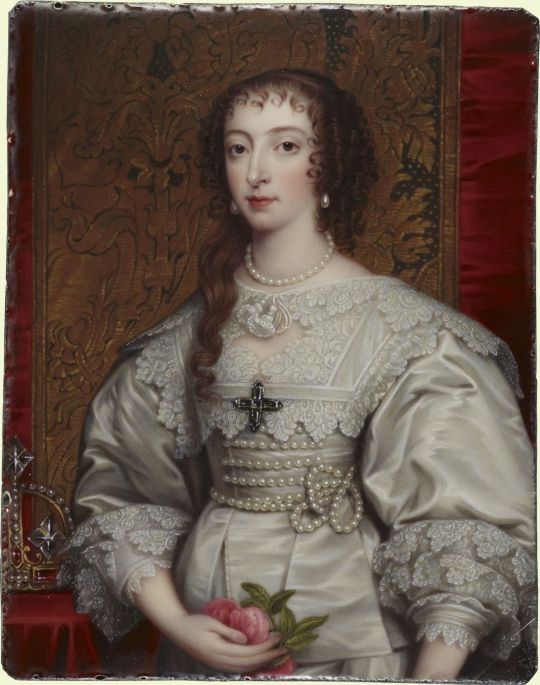
Queen Henrietta Maria (1609-1669) by Henry Bone.
#henry bone#henry pierce bone#kingdom of scotland#kingdom of england#kingdom of ireland#uk#house of stuart#maison de bourbon#fils et filles de france#house of stewart#queen henrietta maria
21 notes
·
View notes
Text
alright dongrel club gimme the rocket to cuba ill take it lol
#happy st patricks#war on england at the end of the month#war on england from the queen of the catgirls#her friend joan the queen of france#and our friends the anishinaabe#miigwetch!#everyone for everyone#well have ireland and scotland back by christmas. inshallah!#the odds on my grandpa just flipped over 50 you time travelers are crazy lmao
1 note
·
View note
Text






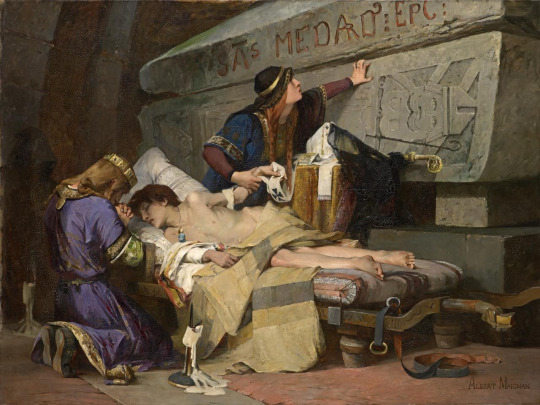
There's something truly magical about late 19th century history paintings.
It's the last gasp of the French Academic style, but instead of lots of drapery and allegory, they are taking cues from the rising tide of archaeological research and forward-looking school of narrative illustration, which adds up to the first real attempts to depict the past as best they it could be imagined. These paintings have more in common with the old-(ish) National Geographic illustrations of life in ancient Knossos than they do with their contemporaries in the Pre-Raphaelite movement.
From top to bottom-
"Cardinal Richelieu at the Siege of La Rochelle," by Henri-Paul Motte (1881)- depicts the siege by the forces of Louis XIII of France, lead by Cardinal Richelieu, against the Huguenots in the port of La Rochelle, 1627-1628
"Bringing Home the Body of King Karl XII of Sweden," by Gustaf Cederstrom (1884)- depicts the route of the Swedish army following a failed invasion of Norway that ended with the death of King Karl XII, 1718
"Zenobia's Last Look on Palmyra," by Herbert Schmalz (1888)- depicts the Palmyrene Queen Septimia Zenobia in the moments before leaving her besieged capitol, having been captured by the forces of the Roman emperor Aureliuan, 272 AD
"Reply of the Zaporozhian Cossacks to Sultan Mehmed," by Ilya Repin (1880s)- depicts the supposedly historical story of the Cossacks sending an insulting reply to an ultimatum from the Sultan of the Ottoman Empire, Mehmed IV, 1676
"The Execution of Lady Jane Grey," by Paul Delaroche (1833)- depicts the execution of the teenaged Lady Jane Grey, who had been elevated to the throne of England and Ireland for (approx) nine days in July of 1553. Her execution was at the Tower of London in February, 1554
"The Cadaver Synod" by Jean-Paul Laurens (1870)- depicts the posthumous trial of Pope Formosus by his eventual successor Pope Stephen VI ten months after Formosus' death, 897
"Chlodobert's Last Moments" by Albert Maignan (1880)- depicts the death of the Merovingian Prince Chlodebert, son of Chilperic I, before the tomb of Saint Medard, where the prince had been brought in the hope of a miracle, 580
542 notes
·
View notes
Text
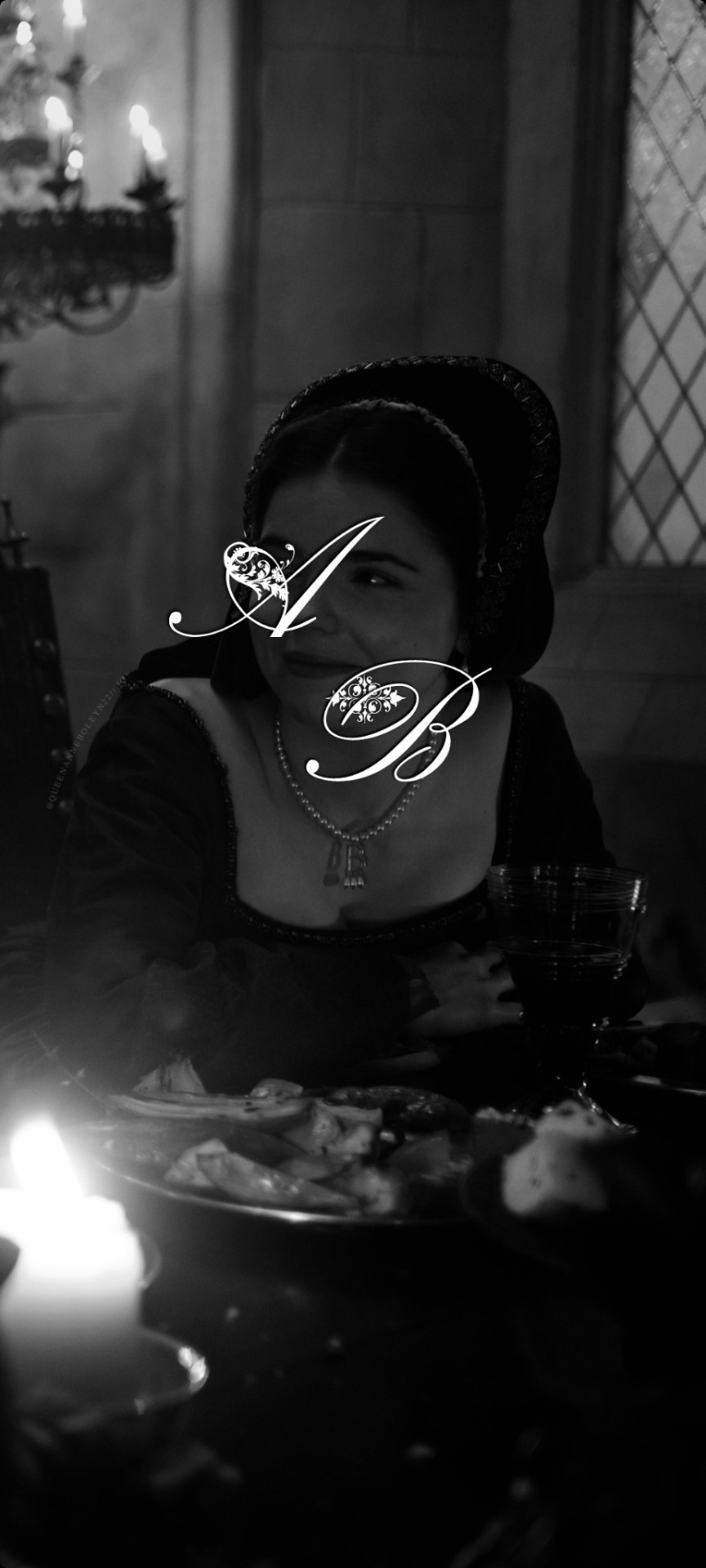
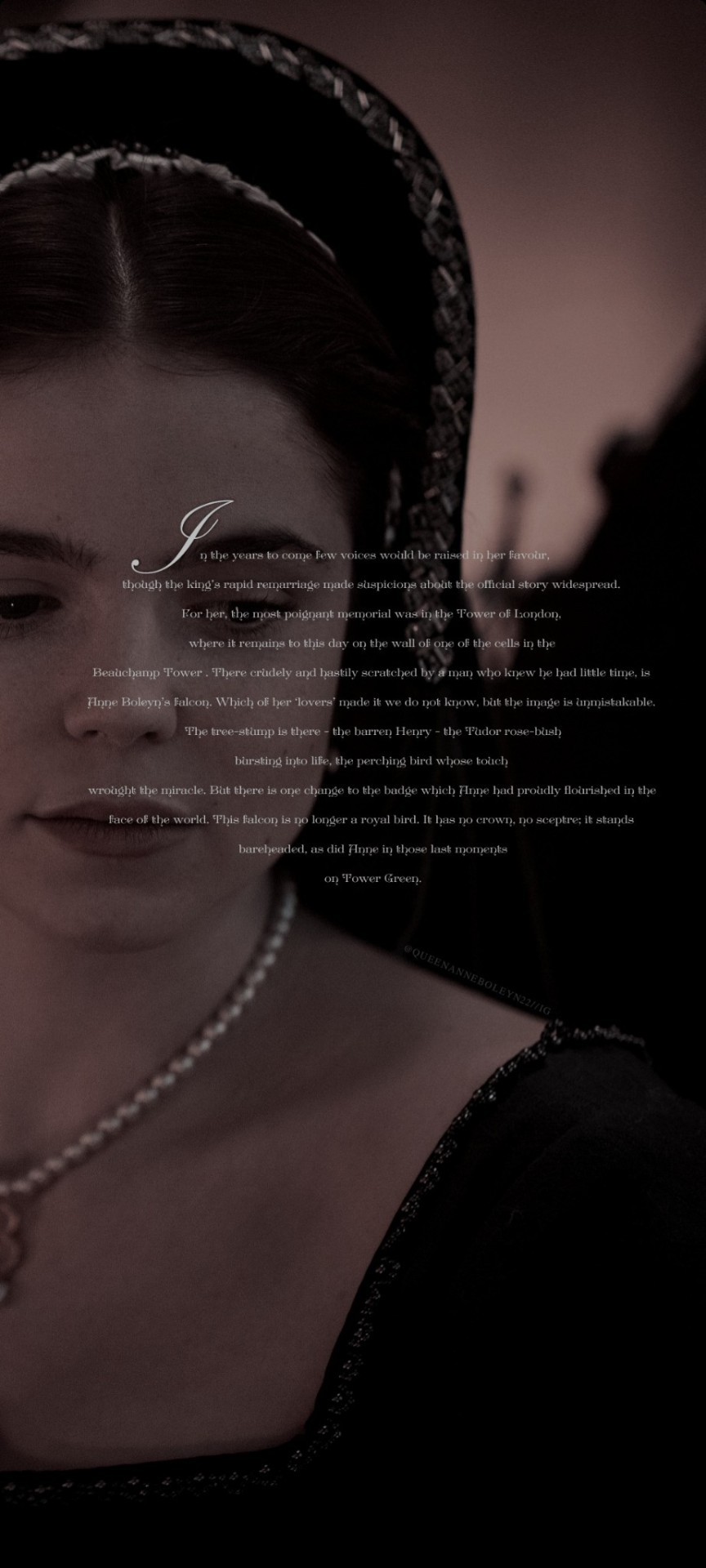
And all the while there was little said of Anne, and little left of her but her child, the young Elizabeth, who had been declared a bastard but who was nevertheless acknowledged as the king’s daughter. Despite her youth and her mother’s shame, she was a valuable card in the diplomatic marriage game and in 1544 she was restored to the succession. A ‘very pretty’, bright and intelligent girl, prematurely cautious. When her elder sister Mary came to the throne in 1553, the 20-year-old Elizabeth found she needed that caution as never before. On Palm Sunday 1554 Anne Boleyn’s daughter was brought by river to the Tower of London, just as her mother had been almost eighteen years earlier. Suspected of plotting rebellion, she spent the next two months in the Bell Tower, followed by almost a year under house arrest in Oxfordshire. In 1558, however, the miracle happened. On Monday, 28 November, to the cheers of the London crowd and the roar of the Tower artillery, Elizabeth came through the gates to take possession of the fortress as queen. The bastardized daughter of the disgraced Anne Boleyn, with her father’s complexion but her mother’s face, splendidly dressed in purple velvet: Elizabeth, by the grace of God, queen of England, France and Ireland, defender of the faith. Is it fanciful to feel that after twenty years, the mother in the nearby grave in the chapel of St Peter was at last vindicated?
#perioddramaedit#anne boleyn#history#edit#alice nokes#the spanish princess#tspedit#thespanishprincessedit#anneboleynedit#the tudors#tudorsedit#eric Ives#perioddramacentral#tudor period#period drama#period drama costumes#perioddramasource#queen anne boleyn#historical#historical figures#women in history#16th century#historyedit#henry viii#women's history#women of history#queen of england#tsp#perioddramasonly#periodd
153 notes
·
View notes
Note
I saw not long ago that the Duke of Norfolk is still a thing, and he's the #1 Duke outside the ones who are made up for being the King's close family, and he's a Howard descended from the guy who died at Bosworth and the Howards have been the top Catholic family in the UK for centuries. How did that work when Catholicism was illegal, and also BOTH the wives Henry VIII killed were members of that family? Why didn't Henry or a devout king take them out? Why didn't they go down with the Stuarts?
Great question!

The Howards have always had a remarkable talent for getting themselves into and out of trouble - the former because they were ambitious noblemen who aspired to high office and dynastic marriage alliances with the royal family, the latter because they were rich and powerful noblemen who were good at laying low for a while and coming up with a good plan b.
So to take Thomas Howard, his father and grandfather had gambled heavily on Richard III and lost almost everything when the Tudors came to power. However, Thomas managed to marry Anne of York, which gave the Howards a blood tie to the Tudors, and a route back into power as Lord Admiral. Highly successful military service against the Scots made Thomas an Earl and thereafter he was the Tudors' go-to military man in Ireland and France.
Then Thomas gambled again with Anne Boleyn, and when that ended disastrously, he very carefully made sure he ended up on the right side of things by presiding as judge over the trials of Anne Boleyn's "lovers." His prestige nevertheless took a hit and he had to spend some time away from court before eventually being recalled to deal with the Pilgrimage of Grace. (Notably, despite being the leader of the Catholic faction, Thomas had no problem with promoting his Protestant niece or brutally suppressing the Catholic Pilgrimage.)
After bringing down Cromwell, Thomas achieved his zenith of power by bringing about Henry's marriage to Catherine Howard. That gamble ended disastrously when Catherine's adultery was found out, leading to Thomas being exiled from court. He later found his way back into power, only to be thrown into the Tower along with his son and the rest of the Catholic faction when the Seymours came to power. And so it went.
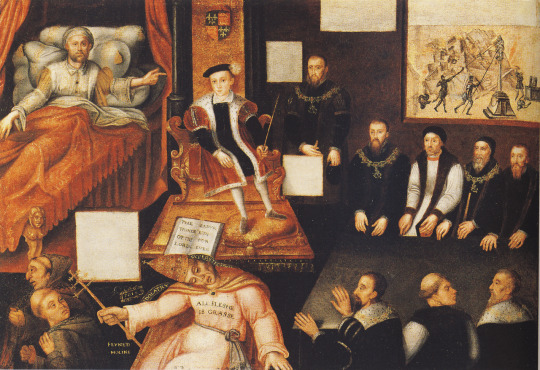
As to the issue with Catholicism, the thing to keep in mind is the "middle way" that the English Reformation pursued. When the dust had settled between the conflict between Edwardian Calvinists and Marian Catholics or crypto-Catholics, Elizabeth I's settlement didn't quite outlaw Catholicism. Catholic "recusants," as they were known in the statues, were fined for not attending Church of England services, but a wealthy family like the Norfolks could afford to pay. Now, it wasn't exactly safe - Thomas' son Henry Howard the Earl of Surray got himself executed by Henry VIII due to his extreme political stupidity, and his son Thomas got executed for trying to overthrow Elizabeth I in favor of Mary Queen of Scots, and his son Philip died of disease in the Tower of London, where he had been jailed for being a Catholic and plotting with Jesuits, although Philip's son actually did quite well as a diplomat and courtier under James I in part because the two shared interests in collecting art.
And so it went...
57 notes
·
View notes
Text
Princess of Wales - 2023 Statistics (FULL YEAR)
In 2023, the new Princess of Wales completed (by my count) 137 engagements. While this is around 30 engagements fewer than 2022, 2023 is still Catherine's second busiest year and - by far - her year with the most appearances not in the Court Circular. As well as this, she was sighted (or appeared) 17 times and appeared in a whopping 43 official (or unofficial and leaked!) photographs.

She gained three new military positions throughout the year and finished with 29 patronages. Of her 137 engagements, 76 were related to one of her patronages, averaging at one patronage visit every 2 engagements. Her most visited patronage was, of course, the Royal Foundation of the Prince and Princess of Wales, with 48 visits. This was followed by the Rugby Football Union and the All England Lawn Tennis and Croquet Club (with 4 visits each). She performed no engagements on behalf of Action for Children, The Air Cadet Organisation (she visited the air cadets during her visit to RAF Fairford, but this was not recorded as an official engagement), EACH, Family Action, the Maternal Mental Health Alliance, the Natural History Museum, NHS Charities Together (although she met with NHS workers to celebrate the NHS's 75th birthday), Place2Be, RAF Coningsby, the Royal College of Obstetricians and Gynaecologists, the Royal Photographic Society, or the 1851 Trust.

Of her engagements, 70 have been solo and 41 accompanied by her husband, the Prince of Wales. Three were also with her children, Prince George, Princess Charlotte, and Prince Louis, five with a range of foreign royals, as well as 16 with either the whole or most of the working British Royal Family, and two with both foreign royals and members of the BRF.

118 of her engagements physically took place in England, with all bar 3 physically occuring in the United Kingdom (with none in the Republic of Ireland). Of the 118 engagements which took place in England, 37 occured in London and 51 in Windsor. Catherine’s engagements also took her to 31 other areas of the UK. Catherine also performed engagements in Wales and Scotland. Catherine also undertook two engagements in France (for the Rugby World Cup) and one in Jordan (Crown Prince Hussein's wedding).
During the year, she performed engagements on a variety of themes. 42 of those engagements were predominantly related to her Early Years initiative, while 12 were linked to the military and 11 linked to culture, sport and diplomacy apiece. 10 engagements were specifically linked to the Coronation, while she also completed 9 engagements linked to mental health, 7 linked to children and young people, 3 linked to the outdoors, and 2 linked to the Commonwealth. Catherine also completed 19 engagements which could not otherwise be categorised.

Clotheswise, her most worn designer has been Alexander McQueen, with 28 outfits, followed by 14 outfits from Holland Cooper, while 11 items of clothing were unidentified. Her most carried bag designer was Mulberry (11), followed by Emmy London with 6, and 1 which was unidentifed. Mulberry has been her most carried bag designer in every year apart from 2020. Her most worn shoe designer continued being Gianvito Rossi (with 39 wears), followed by 8 pairs from Emmy London, and 6 from both Veja and Aquazzura. Once again, Catherine predominantly wore pieces inherited from either Diana (10) or the Queen (16). Aside from them, she also wore Daniela Draper jewellery 12 times. When it comes to accessories, her most worn item was her Anderson's belt (6 times), and she continued to return to hats made by Philip Treacy (6 times). She also wore 9 unidentified pieces. According to my (100% wrong) calculations - created from my own criteria (where items are counted each time she wears them), she wore £65,669.41 worth of new clothes this year and £267,495.29 worth of clothes in total.
30 notes
·
View notes
Photo

Decade of foundation of the oldest football club in European countries.
by u/Massimo25ore
England: Sheffield Football Club 1857
Wales: Wrexham A.F.C. 1864
Scotland: Queen’s Park Football Club Glasgow 1867
Denmark: Kjobenhavns Boldklub 1876
The Netherlands: Koninklijke Haarlemse FC 1879
Northern Ireland: Cliftonville Football Club 1879
Switzerland: FC St. Gallen 1879
France: FC Girondins de Bordeaux 1881
Hungary: Ujpest FC 1885
Belgium: Royal Antwerp Football Club 1887
Finland: Helsingin Ponnistus 1887
Ireland: Athlone Town A.F.C. 1887
Portugal: Associaçao Académica de Coimbra 1887
Sweden: Oergryte Idrottssaellskap Gothenburg 1887
Germany: BFC Germania Berlin 1888
Spain: Real Club Recreativo de Huelva 1889
Greece: Panionios Football Club 1890
Malta: Saint George’s Football Club Cospicua 1890
Czech Republic: SK Slavia Prague 1892
Italy: Genoa Cricket and Football Club 1893
Austria: First Vienna Football Club 1894
Norway: Odds Ballklubb Skien 1894
Slovakia: 1. FC Tatran Presov 1898
Estonia: Eesti Spordiselts Kalev 1901
Serbia: FK Backa Subotica 1901
Turkey: Besiktas JC Istanbul 1903
Croatia: NK Rijeka 1904
Romania: FK Csikszereda Miercurea Ciuc 1904
Poland: Miejski Klub Sportowy Cracovia 1906
Latvia: British Football Club Riga 1907
Russia: FC Znamya Truda 1909
Bosnia and Herzegovina: FK Sloboda 1910
Slovenia: Nagometno Drustvo Illirija Ljubljana 1911
Bulgaria: PFK Botev Plovdiv 1912
Montenegro: Fudbalski Klub Lovcen Cetinje 1913
Ukraine: FK Dnipro Dnipropetrovsk 1918
Albania: Vllaznia Sport Club 1919
Lithuania: Futbolo Klubas Sveikata Kybartai 1919
North Macedonia: FK Ljuboten Tetovo 1919
45 notes
·
View notes
Text
Currently reading a book about Queen Jane (don't worry I already know this Does Not End Well) and this may be the one time when Mary Tudor's stubbornly sticking to her guns until everyone around her Sees Reason actually works. Though not quite, I suppose, since it didn't take long for her to get the throne. But! Someone else made a decision that affected her life and she went "Get fucked" and insisted she was still queen of England* and won! Sadly I remember it being mostly downhill for her from here but still! She won a thing!
Jane's problem partly seems to be that the public phone-in vote for "Who Should Be Queen?" is running the one everyone's long been assuming would be queen against an unknown who was only added to the poll so there'd be some Drama created by the idea that the favourite might not win. Otherwise Mary's fans might not bother to pay £1 to vote for her, and then where would we be? (Answer: poorer, and in a reality where there were phones in the 16th century.)
John Dudley has a lot of sons, I bet Henry 8th hated him. At least one of them dies in this story, and it's weird that the highlight here is the occasional glimpse of the son you know from books about Elizabeth 1st, who also hasn't done much in this tale but ooh it's another Celeb Cameo when she pops up to claim to be too ill to travel!
Actually I was surprised by how late Dudley & Co left the "capture the two people ahead of Jane in the line of succession" part of their plot, but I suppose they didn't know when Edward was going to die and if you move too soon everyone's just going to ask "Why have you put the princesses in the Tower? Are you doing a sequel to Richard 3rd?" which would be Awkward AF at the very least. Especially if Edward then somehow didn't even die. But anyway they did leave it a bit late and were left in an "oh shit, the other queen can move across the board in any direction" panic.
It's quite shite for Jane, really. She didn't want to be queen anyway, she just wanted to read books :(
(*she's also claiming to be queen of France and Ireland, as was traditional, but those are... "less fact-based" we might say.)
#history fandom#books and reading#i feel like jane could have ended up quite despotic about religion as she had zero chill on that but it didn't happen so whatever.#they should do another (regnant) queen jane just so we can argue about how to number her#but that would have to be about 3 generations away and i'd prefer if we'd just ditched the monarchy & aristocracy entirely by then#the tudors (the dynasty not the tv show)
13 notes
·
View notes
Note
wait George Villiers was a shitty person? what did he do?
Hi! I’d like to preface my answer to this question by saying that I’m not a historian (I have a degree in linguistics and literary studies), and all of my information comes from doing a lot of research regarding George on my own, therefore there might be a lot more info on what exactly he did or did not. So if there is someone more knowledgeable about this, please correct me.
What George Villiers did, and, quite frankly, how his career had gone could be described by a line reportedly spoken by Queen Anna of Denmark to Abbot, the archbishop of Canterbury (and Pembroke), two people who worked together to install George in James’s bedchamber as a favourite “You and the rest of your friends know not what you do. I know your master better than you all, for is this young man be once brought in first person he will plague must be you that labour for him.”
As opposed to the previous favourite Somerset (Robert Carr), Gorge was deeply ambitious as he not only wished to enrich himself while in favour, but he also wanted to become an important player in the political sphere. (If I dare say so myself, I believe, that his time as a politician, would not be half as bad if he had received a proper training. Tho he was undoubtedly a shitty, to put it mildly, person) He knew that key to his success was the affection and love of the king as he could literally take everything that was given to him and make him once again the poor George that he once was. (I really do not want to talk about their relationship as it would take more than a sentence to summarise it). Thans to how rapidly he climbed the social ladder and received more titles and positions at the court which in turn allowed him to have actual sway in the country’s internal and external politics. Geore was also keenly aware that apart from the royal favour he needed connection to face his opposition (the ancient families of England). So patronage, it was something common (even now). He installed his immediate family at the court and secured them positions, (mmm nepotism), the marriage market was also fair play as George slowly but surely arranged marriages for people in his family, win-win situation.
Addressing his now growing family, his wife – Kate Manners, became one as he possibly kidnapped and raped her. (There are some rumours that he “what-a-surprise got locked” with her in one building so after that they just had to get married.) It was a marriage for the money she could bring, and the connections did not hurt either, a nice bonus, one might even say. He also made a deal with Edward Coke to marry off his daughter (her mother protected her fiercely) to his brother. It is said that she cried during the ceremony.
In lieu of the theme of nepotism, as he slowly transformed the royal bedchamber into a place of the de facto lawmaking. He packed every place possible (to an extent) with people what would back him up. For that he was notoriously selling patronages, titles, and land, especially in Ireland where law did not hold him so much. Literally whenever the parliament tried to remove him from power because of how badly (Imo he would have done much better if he had training and not just gone with the general fuck around and find out rule.) he did his job, and people were fed up with him. He started a whole 20D chess match with Richelieu which was pointless, started a few campaigns that ended with him often not paying the soldiers (I mean no one would stab him to death over such thing… right), the last one being a pointless siege that only made England loose troops and money. (He could have one that one, he was so close to it, but he had to celebrate the possibility of victory rather than making people sing papers). He enraged the protestant England by helping to offer help France with fight off Protestants. What else… oh yes, he almost sa’d Anne of Austria which just… mmm the flavour of historical silencing of women, misogyny and men who just have dick measuring contests because.
Tho what I do not believe, and what many line up with, is that he did not poison James (or at least wasn’t aware of doing so??) because I think that he would gain more from helping the king survive than just killing him.
Sources
Bellany, Alastair, and Thomas Cogswell. 2015. The Murder of King James I. New Haven: Yale University Press.
Cogswell, Thomas. 2017. James I (Penguin Monarchs). Penguin UK.
Lockyer, Roger. 2014. Buckingham. Routledge.
Stewart, Alan. 2014. The Cradle King. St. Martin’s Press.
Veerapen, Steven. 2023. The Wisest Fool. Birlinn Ltd.
10 notes
·
View notes
Text
WTW Relationships Week | Love Interest
Vlad Draculea | Former Voivode of Wallachia | Member of the House of Drăculești
🌹🌹🌹
She was twenty when she laid eyes on him. Her father’s family had thrown a ball in honor of her visit, and it was an open invitation. She met with nobles from England, France, Ireland, and Scotland, as her family had ties to all of them, but none impressed her. She’d resigned herself to simply observing the party when an exceedingly tall and distinctly foreign-looking man approached her. He was pale, with beautiful blue eyes and long black hair, wearing a black suit and red cravat, with a red overcoat. His voice was deep and smooth, and his accent was thick. When he spoke to her, his tone was soft and he was humble, as if he knew he was undeserving of her presence. He got down on one knee and bowed, then asked her if he might have the honor of a dance. She had smiled and told him to rise, then offered her hand, granting his request. He took it and brought it to his lips, before leading her to the center of the room. They danced for the rest of the night, talking between breaks in the music and song changes.
They married after a month of courting. Her family was delighted and relieved, though he was not who they imagined for a son-in-law. She was happy, happier than she had ever been, and it showed. He was devoted and worshipped her like she was a queen, or a goddess. They spent their newlywed years in his castle in Romania, but visited her family in Paris with frequency. They were exceedingly happy, and even though the castle was far too big for two people, it felt like home.
He told her the truth a month into their marriage. She had always suspected, always known something was different about him, but to hear it said aloud was something else entirely.
“So, you are a vampire.” she said, standing next to her boudoir, looking at him as he sat on the edge of their bed.
“Yes, I am.” Vlad affirmed, then bowed his head, avoiding her gaze. “I am sorry I did not tell you before, and that if it were not for the guilt, I would never have told you.” he admitted.
Rose tapped her fingers on the furniture’s surface, then shrugged. “So what?”
“I beg your pardon?” Vlad raised his head, looking at her in bewilderment.
“So what if you are a vampire? Why should that matter?”
“I… I feed on the blood of humans to survive. I am a creature of the night, an abomination of nature. A product of a deal with the Devil.”
Rose shrugged again, arms now folded. “So what?” she asked again, walking towards him. “So what if you drink the blood of humans? So what if you are a creature of the night? So what if you are an abomination of nature? So what if you are a product of a deal with the Devil?”
Vlad blinked at her. “You…. You do not care?”
“Of course I don't care.” Rose replied, now only a few inches away from him. She took his hands and offered a small smile. “You're my husband, and I love you.” she leaned down and kissed his cheek, thumbs stroking the tops of his hands. “Besides, do you really think I would've married you without even considering the possibility that you weren't quite normal?”
“You knew? All this time, you knew?”
“I had my suspicions. And there were… incidents, shall we say.”
Vlad winced. He knew what she was talking about. “I am sorry for those. I never meant for you to see.”
“Don’t be. The world's not going to end if I don't wear silver.” Rose assured. She studied his face for a moment, trying to see if there was something in his features, a telltale sign of vampirism, that she had missed all the others times she'd looked at him. “Vlad, let me see your eyes.”
“You are seeing them.”
Rose rolled her own at that remark. “Let me see your real eyes. I know they have not been naturally blue for a long time.” She took a seat sideways in his lap and wrapped her arms around his neck, waiting patiently to see if he would oblige.
Vlad closed his eyes and inhaled deeply, then squared his shoulders and exhaled slowly. When he opened his eyes, they were a startling shade of red. “There.”
Rose stared at the color in awe, a delighted grin on her lips. “How beautiful.” she murmured, her hands moving to cup his face. Thumbs brushed the top of his upper lip, and she laughed softly when his tongue flicked out and licked the digit.
“Beautiful?” Vlad repeated, withdrawing his tongue. “I stand before you, a monster, a creature of the night, and yet…”
“And yet I want to be like you.” Rose smiled, lowering her hands to his shoulders. “Will you change me?”
“Absolutely not.” Vlad straightened up, bristling at the mere thought.
“Aw, why not?” Rose pouted, looking a bit like a child who had been told they couldn't have the toy or treat they wanted.
“Because it's a curse, Rose.” Vlad sighed, rubbing her back.
Rose ran her fingers through his long hair, affection in her eyes as she gazed at him. “My love, you are worth any curse. You are worth any sin. You are worth a ‘deal with the Devil’. You are worth it all.” she smiled, pausing the movement of her hand. “You are my life, Vlad, and I will follow you anywhere.”
“Even into the deepest, darkest pits of Hell? To the end of the Earth? Into battle?” Vlad asked, his hand cupping her neck.
“Yes.” Rose answered, placing her hand over the one he had on her neck. “You can pose as many scenarios as you like, but my answer will always be the same.”
5 notes
·
View notes
Text

The Lady Elizabeth 👑🌹
By artist Qijin He and based on the portrait by William Scrots
#elizabeth#lady elizabeth#princess elizabeth#becoming elizabeth#queen of england ireland and france#defender of the faith#on earth supreme govenor of the church of england#henry viii#anne boleyn#tudor#house of tudor#william scrots#tumblr art#her majesty#👑👑🌹🌹
21 notes
·
View notes
Text
So this is just what i thought on what language the twst characters homeland are, but correct me if i'm wrong, and i apologize that my english are not good since english is not my primary language 😅
Rose Kingdom/Queendom of Roses
Since the one that lives here are Riddle, Ace, Deuce and Trey. Riddle are based on The Queen of Hearts/The Red Queen Iracebeth, ADeuce and Trey are based on the Card Soldiers (The Ace, The Deuce and The Trey), they're from Alice in Wonderland That's theme from Mediaeval England/Britain so I assumed the language that they use are British English, Scottish and Ireland 🤔. Imagine Riddle with a Dub that sounds exactly like Ciel Dub from Black Butler/Kuroshitsuji 🤭
Afterglow Savanna/Sunset Savanna
The ones that live here are Farena, Leona, Cheka and Rook, Farena Based on Mufasa, Leona based on Scar/Taka, Cheka Based on Simba, they're from The Lion King that's have African/Savanna vibe, so I assumed the languange that they use are Swahili or any other African languange. While in the other hand there's Rook who based on The Hunter from Snow White, and as we all know that Rook use French most of the time, which make me thinking maybe some part of Afterglow/Sunset Savanna use French Instead, like Coast Ivory/Côte d'Ivoire.
Coral Sea
Those who lives here are Azul, Jade and Floyd, Azul based on Ursula/The Sea Witch, Jade based on Jetsam, and Floyd based on Flotsam, they're from The Little Mermaid. From what I heard The Little Mermaid are based from Danish Folklore(correcg me if i'm wrong), so I assumed they use the Scandinavian Languages (since i'm not too sure the Little mermaid are from danish folklore, i choose to guessed around the Scandinavian Countries) 😅
Land of Hot Sands/Scalding Sands
Those who lives here are Kalim and Jamil, Kalim are based on The Sultan and Aladdin(i think), and Jamil are based on Jafar from Aladdin which is themed Arabian, so I assumed they're using Arabic or maybe even Indian as their language 🤔
Land of Pyroxene/Shaftlands
Those who lives here are Vil, Cater, Jack, Trein and Vargas. Vil's based on the Evil Queen from Snow White that's from Germany, Trein's based from Lady Tremaine from Cinderella that's from France, Vargas based on Gaston from Beauty and the Beast that's also from France, I headcanon Jack based on The Big Bad Wolf from Little Red Riding Hood which said to be first started in frech, Cater're same as those four from Kingdom of Roses, So I assumed that the Land of Pyronexe/Shaftlands language are French/German, but from what I remember from Vil's backstory in the game Young Jack Said that "you must be new around here" (is that what young jack said?🤔, i don't remember really), so i assumed that Vil's not originally from Land of Pyroxene/Shaftlands. 😅🤷♀️
Isle of Lamentation/Island of Woe
The one that lives here are the Shroud Brothers, Idia and Ortho. idia are based on Hades from Hercules, so I assumed the Isle of Lamentation/Island of Woe use Greek as their Language. Not to mention the building on the location that show in Eps 6 looks like those builing in Hercules/Ancient Greece.
Valley of Thorns/Briad Valley
The one that lives here are Malleus, Lilia, Silver and Sebek, Malleus based on Maleficent, Lilia based on the Bats that show when Maleficent using her magic(?) Or he based on those fairy aunties (Flora, Fauna, and Merryweather(?)), Silver are based on Aurora or Prince Phillips, Sebek based on the Gargoyle/Ogre(?)/whatever creatures that guarding the castle Maleficent Resides, they're from Sleeping Beauty that's from France, so I assumed their language are French.
Port Jubiles/ Port'O Blisz
Sam lives here, Sam are based on Dr.Facilier from Princess and the Frog that's from the US, so I assumed Port'O Bliss have English language with different accents of maybe just New Orleans Accent(listen i don't know what kind of accents that the US have, so since i'm not from US i apologize) 🤧
Harvest Village
Epel lives here, Epel based on The Poison Apple from Snow White, so I assumed Harvest Village language are Germany.
Sage's Island
This is where NRC and RSA located, I guessed their language are Japanese.
86 notes
·
View notes
Note
Do you have any info on John's French ancestry? His grand or great grandparents were French and I am fascinated by what influence they could have had on him/his relationship with being French, especially during his """diplomacy""" trip
Unfortunately, it doesn't appear that Laurens had any major influence by his heritage in general.
Laurens was French Huguenot on his father's side. The immigration of French Huguenots moving to Charleston was actually quite common and predated Laurens's ancestors. A colony of Huguenots arrived in South Carolina, Charleston, having been sent out by the English Government to enltivate oil, wine and silk. But the larger immigration came in 1685-6, when French Protestants flocked to the State in great numbers. They formed four settlements, one in the City of Charleston, and the other three in the country, where they erected Churches in each settlement. [x]
There appears to be no ground for the late 20th century claim that the family descended from André du Laurens, the physician of both Henry IV. and his queen, Marie de' Medici, Chancellor of the University of Montpellier, the author of extensive medical works and belonging to the lower nobility. Henry Laurens knew nothing of such a connection, and never supported it. But while it is also highly improbable, there is also to consider that someone like Henry - descended far too down the line to properly recollect such an account - would have known or not known of it with any sincerity. The theory mostly stems from John Laurens's similarly named great-grandfather, André Laurens, who left France only seventy-three years after the death of André du Laurens. But hypothetically, he would also have been quite likely to keep his name Du Laurens, as that of the physician, like all the other descents had. And there would be no reason to doubt he would have cherished this relation from one of the most distinguished savants of his time.
It's hard to trace the Laurenses with the little record surviving of them, the name was common in the west and southeast of France and was borne by many families having no known connection at all, so much so, that many years before John Laurens's family left France there were numbers of Laurenses in New York, sometimes with the same Christian names as the ones from JL's folks. But it is known André was native of the Catholic France—And his family hailed from Annonay, Vivaris Province. André's father, Jean Laurent (Laurens), was a merchant in Rochelle, and died before 1681, leaving his widow, Elizabeth Menigaut (Manigault) and their son André. They resided in the parish of Saint Sauveur. Among the closest and oldest friends of the Laurenses was the family of Daniel Lucas, also a merchant of Rochelle, who owned a small farm nearby Périgny. Like other Huguenots, the Laurenses left France for the hope of religious freedom—In the wake of Louis XIV's efforts to stamp out Protestantism, when the pressure of persecution was becoming heavier; André, his mother, and Daniel alongside his wife, Jeanne Marchand, with their four children, fled to England in 1682. Jeanne Lucas soon died in her new home, but the friendship between the families grew into a closer bond when her daughter, Marie Lucas, and André were married in the French church in Threadneedle Street, February 22, 1688. [x]
The Laurenses tried their fortunes in Ireland, and then later, Marie and André settled first in New Jersey, then in New York City. [x] Where many of their kin had immigrated to priorly, some of the family fled from the persecution in France to Holland. The new-comers in New York were not among strangers, for the numerous colonies whose interests centered around the French church were a sympathetic community, living very much its own distinct life, and there are several reasons for supposing that they had Laurens relatives in the town. In the Collections Huguenot Society of America there is plenty of correspondence from André and his family to others, and even an account of a mother and son in 1700 as witnesses at the marriage of a Jean Laurens and Marie Benereau.
It was there on the 30th of March, 1697, Marie gave birth to the third of their five children, Jean Samuel Laurens (Possible namesake of their new friend, Samuel Grasset). While in New York, the Laurenses befriended another family of Huguenot refugees, the Grassets, who fled from France about the same time as the Laurenses and Lucases. Jean - age nineteen - married Esther Grasset - age fifteen or sixteen - shortly before André decided to uproot his family again. Finally, they sailed and moved to Carolina around 1715, where many Huguenots had already settled. Charleston served as the provincial capital as well as the economic heart of the low country.
André died soonly after arriving in Charleston. David Duncan Wallace describes him as; “as a man of piety, shrewdness and force. At the time when the humble foundations were being laid for the great fortunes and family careers which the next two generations were to witness, he did his part in giving his children their start in the race.” [x] His grandson, Henry Laurens, later recalled that he; “had Saved So much Money as enabled him” to provide his five children “with Such portions as put them above low dependance.” [x]
But after André's death, little cultural preservation is noticable in the family. Henry says “Some of them retained the French pride of Family, & were content to die poor. My Father [Jean S. Laurens] was of different Sentiments, he learned a Trade, & by great Industry acquired an Estate with a good Character & Reestablished the Name of his Family.” [x] After the family moved to Charleston, Jean chose to anglicanize his name, and he became known as John, whom John Laurens was named after. Both Jean and his wife were born Americans, ‘the French pride of family’ died out in a generation or two with little resemblance left. Instead to keep his family afloat; like most Huguenots, Jean immersed himself in the South Carolinaian traditions and culture. He learned the trade of saddler at the bench and followed it with such industry as to make himself a much-respected citizen. Over time he prospered in his trade and invested in real estate. He also joined the established Anglican church, where he served as warden of St. Philip’s Parish, and he owned at least five slaves. Yet he remained ambivalent toward the institution that formed the basis of South Carolina's prosperity. On one occasion, he made a cryptic prediction that slavery would eventually collapse. [x]
It was said that Jean; “gave his children the best education which (Charleston) afforded.” [x] Jean seems to have had solid expectations for Henry, as his education was directed into merchantry. Henry journeyed overseas to receive further training, in 1744 Jean sent Henry to London to work in the counting house of the respected merchant James Crokatt. In 1747 Henry finished his apprenticeship and returned to South Carolina. He didn't learn Latin or Greek, and barely knew French himself—As he only seems to have had fluently spoken a few expressions, which might indicate that as a man he picked up a small amount of French. But later he requested a friend to translate his letter of 1774 to the Poictiers Laurences into French, stating that he could not write in the language. [x]
And it seems that Henry wasn't interested in reconnecting his family to their French heritage either, as JL did not learn French at a very young age. He only eventually took up the language at age thirteen, on December 28, 1767, which was basic schooling for the wealthy class at the time period;
My Jack has made an Amazing progress in French from the 28th December when he enter'd upon that branch, I say so because those who are good Judges & can't flatter tell me so, & I know a little of the Matter too.
Source — Henry Laurens to John Moultrie, [January 28, 1768]
Laurens's conduct in France was also quite grounded on his identity as an American Patriot (A headstrong one) and cultural unfamiliarity that he broke their etiquette. So, it is quite apparent JL's generation of the family were not tightly knit to their heritage. As it was commonly accustomed - similarly to this day - that immigrants convert their traditions and cultural aspects to match their new country of residence, especially those who traveled to the colonies.
Sources:
John Laurens and the American Revolution, by Gregory D. Massey
Huguenot Church in Charleston, by Margaret Middleton Rivers Eastman, Richard Donohoe & Maurice Eugenie Horne Thompson, with Robert P. Stockton
The Life of Henry Laurens: With a Sketch of the Life of Lieutenant-Colonel John Laurens, by David Duncan Wallace
Collections of the Huguenot Society of America, Volume 1
#amrev#american history#american revolution#historical john laurens#john laurens#jean samuel laurens#andre laurens#henry laurens#laurens family#history#queries#cicero's history lessons#maip macrothorax
33 notes
·
View notes
Text
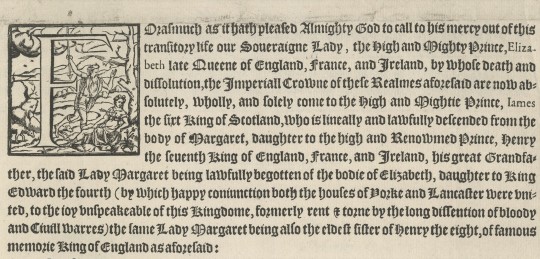
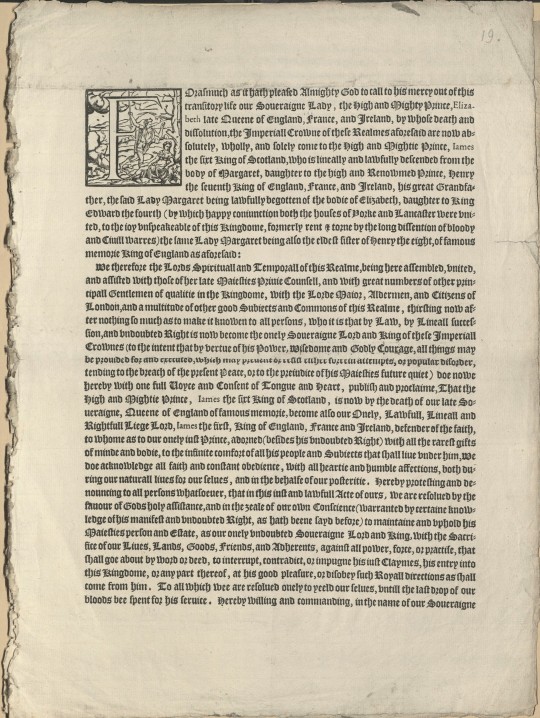

Proclamation announcing the death of Queen Elizabeth I and the succession of King James I. In England before 1750, the new year officially started on March 25th, which is why the proclamation is dated 1602 instead of 1603.
Forasmuch as it hath pleased Almighty God to call to his mercy out of this transitory life our soveraigne lady, the high and mighty prince, Elizabeth, late Queene of England, France, and Ireland... Imprinted at London : By Robert Barker, printer to our late soueraigne lady Queene Elizabeth, March 24. Anno Dom. 1602 [i.e. 1603]
STC 8298
Houghton Library, Harvard University
128 notes
·
View notes
Text
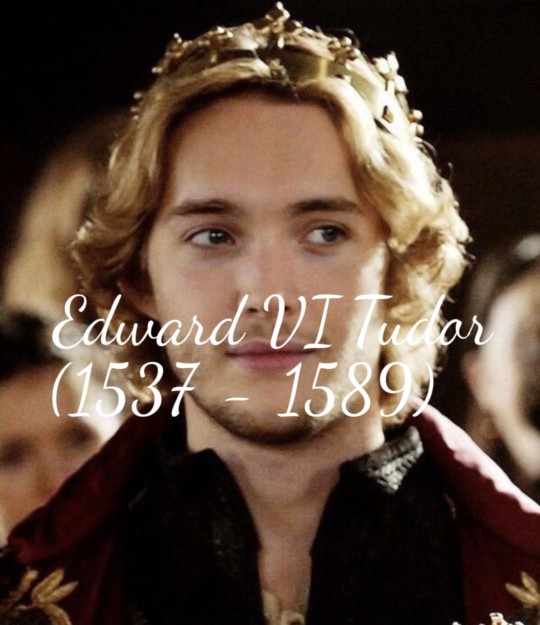





A happier life for Henry VIII's children: Part 3.
Edward was the son of King Henry VIII of England and his third wife Jane Seymour. The birth of a healthy boy was a great miracle and joy not only for his father, but for the whole of England. Edward's childhood was happy, because he had his own mother with him, who with her gentle voice could calm and support him. But it did not last long, in 1547 the boy had to grow up sharply and take on his children's shoulders the responsibility for the whole country, because his father Henry VIII died. His older sister Mary, Queen of France, became regent until the little king came of age. Mary ruled in her brother's place for 8 years. In addition, Mary and Jane did not allow the latter's brothers to influence the young king. Edward and Thomas Seymour were angry about this and they even tried to remove Mary from power, but they failed. The Queen of France uncovered the plot and sent them both to the Tower for life. In 1557 Mary's regency ended and she returned to France, and Edward became the rightful ruler of his state. Two years earlier the king had become interested in Protestantism, and secretly from his mother and sister he began to study it. At a council, he told his lords that he wished all England to convert to this religion, and most of his advisors supported his idea. The Queen Dowager of England tried several times to dissuade her son, but he became angry and made it clear that he would not allow her to interfere in his affairs of state. Queen Mary of France also did not lag behind and tried to return her brother to Catholicism and her attempts were not successful. But there were also those who disagreed, and because of this there were riots and rebellions in the country, the rioters demanded that the king left his venture and returned to the true faith. However, the king was not deterred by their demands, Edward managed to quell the rebellions and to appease his subjects, he declared in public that he would be tolerant and let them believe what they wanted. And to reconcile Catholics and Protestants, Edward promised to marry a Catholic princess, but their children would be Protestants, and to marry his other older sister Elizabeth to a Protestant. In 1558, the princess married the eldest son of the King of Sweden and left England for good. The king himself married Mary Stuart a year later. The marriage between the King of England and the Scottish Queen was a very successful and cohesive one. Mary appointed her consort as her companion and they lived on two countries.
Jane of England(1560 - 1618). Duchess of Angoulême. In 1578 she married her cousin Charles. Their married life was not a happy one. After the birth of their last child, the couple finally drifted apart and stopped living together. Four children were born in the marriage.
Henry IX of England(1561 - 1611). King of England, Ireland and Scotland. In 1589 he became King of England, and in 1600 of Scotland. In 1605 he proclaimed himself king of Great Britain. He was married, but did not love his wife, during their marriage he never touched her. Also the king had a mistress who bore him 5 children out of wedlock: Mary, Edward, Elizabeth, Grace and James. Died at the age of 51 of bubonic plague.
James I of England(1563 - 1627). King of Great Britain. Inherited from his older brother, as the latter had no legitimate children. Also, unlike Henry, he loved his wife and never cheated on her. Husband of Elizabeth of Denmark, father of 11 children: Edward VII, Sophia, Charles, George, Isabella, Joan, Frederick, Barbara, Henrietta, Arabella and Robert.
Mary of England(1564 - 1590). Mary was given in marriage to her cousin at the age of 18. The marriage produced 4 children. In 1590, Mary contracted pneumonia and died on the anniversary of her father's death.
Elizabeth of England(1567 - 1570). In 1570, the princess caught cold, contracted pneumonia and died at the age of 3.
Margaret of England(1569 - 1624). She was married twice, but both her husbands died shortly after the marriage. After the death of her second husband, Margaret declared that she would never marry again. She founded a charitable foundation and helped anyone in need, she especially focused on helping women and children.
Edward of England(1572 - 1586). Duke of Somerset and Albany. From birth had poor health. Died at the age of 14 from smallpox.
Richard of England(1575 - 1655). Duke of Somerset and Albany. After the death of his brother in 1586 all his titles passed to him. The Prince was noted for his good health and poetic ability. During his lifetime he became a famous poet. In 1600 he married Elizabeth Howard, after the wedding Richard and Elizabeth removed from the court and began to live a happy and quiet family life. The marriage produced 7 children: Mary, William, Edward, Philip, Anne, Catherine, and Nicholas.
Jane Seymour loved her daughter-in-law as her own daughter, the dowager queen liked to spend time in the circle of her grandchildren. On her son, she had almost no influence, but the king loved his mother and because of respect sometimes listened to her advice. Jane died in 1565, and Edward was greatly grieved by her death. Mary, more than anyone else, understood how her brother felt and despite their differences on matters of religion, came to England to give him moral support. In the end, they finally reconciled. Edward VI was a king beloved by the nobility and the people. For most of his reign, he tried to try on Catholics and Protestants and prevent religious warfare within the country. On top of that, the king gave shelter and protection to Protestants who had fled religious persecution. Edward VI died of tuberculosis in 1589. He was buried in Westminster Abbey next to his parents and other family members. Eleven years later, his wife Mary Stuart was buried next to him.
#english history#history#royal family#royalty#history au#au#royal#henryviii#the tudors#16th century#british royal family#edwardvi#marytudor#mary stuart#anne boleyn#catherine of aragon#elizabethi#elizabeth tudor#jane seymour
4 notes
·
View notes